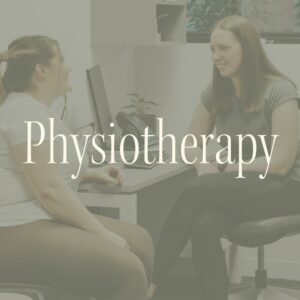Arthritis is a very common condition which affects 1 in every 6 Australians, which is more than 3.9 million adults and children in Australia. (1,2). Arthritis is an umbrella term for a group of conditions which affect our joints. There are over 100 forms of arthritis with the most common forms being osteoarthritis, rheumatoid arthritis, fibromyalgia, gout and ankylosing spondylitis.
What are the symptoms?
Arthritis can affect people in many different ways, but some of the most common symptoms are:
- Joint pain & stiffness
- Joint swelling/ redness/ warmth
- Fatigue and tiredness
The most common joints affected are the knees, hands and hips but arthritis can affect many parts of the body.
What can I do?
Although there is no current cure for arthritis there are many simple evidence-based treatment options and lifestyle changes that we can make to help live well with arthritis including:
Exercise and activity
There is a growing body of evidence that supports the use of exercise in the management of arthritis by keeping our joints moving and muscles strong. In fact, exercise therapy is recommended as first-line intervention in all international clinical guidelines for arthritis.(1-4)
Two systematic reviews, which included more than 1700 study participants, demonstrated the positive effects of exercise for arthritis.(4)
Not every type of exercise is going to be appropriate for everyone and it is important for you to work with your health professional to assess what the most appropriate exercise type is for you.
Pain Management
Learning ways to manage our pain which may include medical management, massage, heat therapy, acupuncture, water therapy and mind techniques (such as relaxation, distraction, meditation) can be beneficial. (5)
Equipment and Joint Support
Using adjuncts such as strapping and equipment that can make tasks easier while not causing pain on our joints. Examples of such equipment may be a different typing keyboard, different chopping utensils and joint strapping/ braces which help support our painful joints.
Fatigue management
It is important to manage tiredness and fatigue through learning to balance rest with activity. We are aiming to avoid a “boom-bust” approach to exercise and activity and instead adopting a more balanced approach allowing for adequate rest in between bouts of activity.
Stress management
There is growing scientific evidence that has shown that mental stress can increase our arthritis symptoms. Long-term and chronic stress can have a detrimental effect on our health and arthritic symptoms. Although it is impossible to avoid stress from time-time, it is important for us to identify ongoing stress and aim to develop strategies to help manage this. (4,5)
Education
It is important to learn about your condition and seek support. As with any chronic condition, it can be natural to feel frustrated or upset but having a good support system and health professional guidance can help manage your condition. Many people with arthritis say that learning about arthritis and management strategies can help them feel in control of their symptoms and make positive changes for their health.If you would like to learn more about any of these strategies or ways to manage your arthritic symptoms, please reach out to a member of the BalanceNorth physiotherapy team who can work with you to help create a plan of action to help manage your condition.
References:
- Ackerman IN, Bohensky MA, Pratt C, Gorelik A, Liew D, 2016. Counting the Cost: the current and future burden of arthritis. Part 1 Healthcare Costs. Arthritis Australia 2016.
- Australian Institute of Health and Welfare 2009. Chronic disease and participation in work. Cat. No. PHE 109. Canberra: AIHW. 4: Refer Arthritis Australia’s website / Reports: Painful realities – The economic impact of arthritis in Australia, 2007 (Report by Access Economics Pty Ltd for Arthritis Australia, 31 July 2007)
- Boniface, G., Gandhi, V., Norris, M., Williamson, E., Kirtley, S., & O’Connell, N. (2021). Where’s the evidence? A systematic review exploring the evidence underpinning exercise dose in clinical trials of rheumatoid arthritis. Physiotherapy, 113, e16-e17.
- Bricca, A., Struglics, A., Larsson, S., Steultjens, M., Juhl, C. B., & Roos, E. M. (2019). Impact of exercise therapy on molecular biomarkers related to cartilage and inflammation in individuals at risk of, or with established, knee osteoarthritis: a systematic review and meta‐analysis of randomised controlled trials. Arthritis care & research, 71(11), 1504-1515.
- Martinez-Calderon, J., Meeus, M., Struyf, F., & Luque-Suarez, A. (2020). The role of self-efficacy in pain intensity, function, psychological factors, health behaviors, and quality of life in people with rheumatoid arthritis: a systematic review. Physiotherapy Theory and Practice, 36(1), 21-37.



